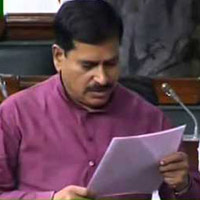 Government has set its sights on the development in the organised and unorganised sectors of the textile industry, which is one of the mainstays of the national economy. The initiatives of the government have raised hopes of resurrection of the Indian handloom and textile industries, K. Radharaman of The House of Angadi, which has a 600-year legacy in the textile trade, said.
Government has set its sights on the development in the organised and unorganised sectors of the textile industry, which is one of the mainstays of the national economy. The initiatives of the government have raised hopes of resurrection of the Indian handloom and textile industries, K. Radharaman of The House of Angadi, which has a 600-year legacy in the textile trade, said.
Setting up integrated textile parks, increasing export, development of handlooms, promotion of handicrafts and increasing sericulture are some of the elements the government has stressed upon.
The new initiatives by the government will definitely help the industry at large, if the government has the right intellectual inputs to make this happen. Most governments have failed in this regard — not necessarily due to the lack of sincerity of intent, but generally due to lack of understanding of the issues at the grassroots, Radharaman, CEO and design head of Angadi Ventures said.
The House of Angadi has over the years contributed to the preservation of handlooms in the country. As early as the 1960s, the family created a model of rural growth, which is said to have been so outstanding that the then World Bank President Robert McNamara visited The Angadi Family Estate in Tanjore on his visit to India.
His company had patrons like former prime minister Indira Gandhi, cultural czarina of yore Pupul Jayakar and Gira Sarabhai, the co-founder in 1949 of the Ahmedabad-based Calico Museum of Textiles.














